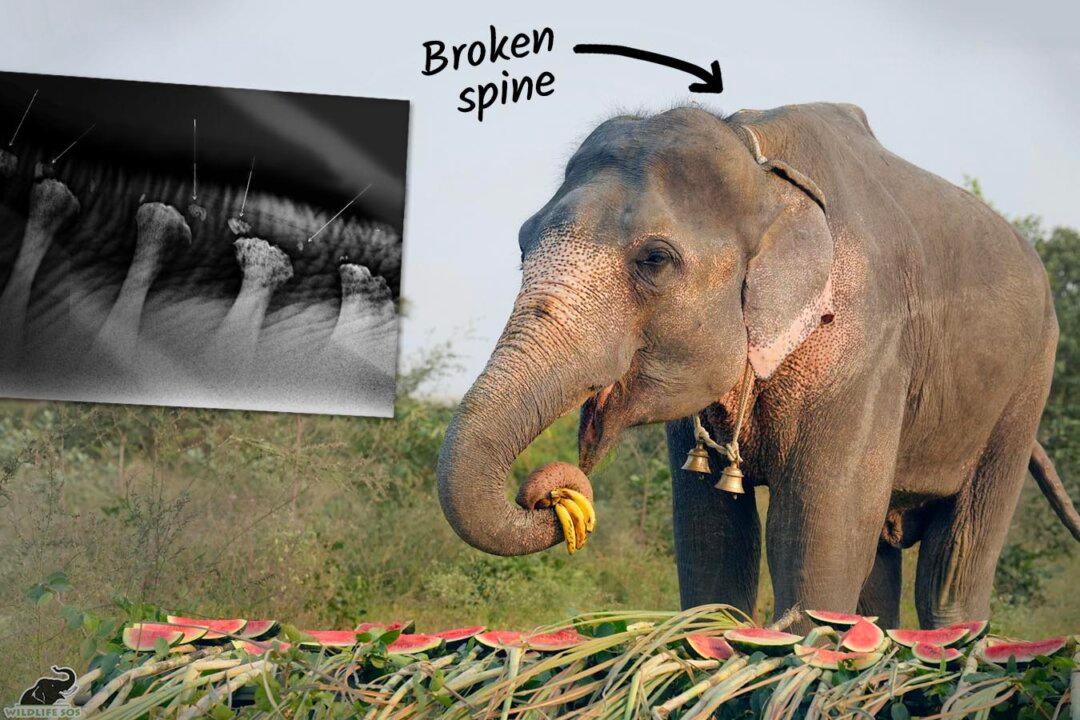Rama expresses moments of joy during a fruit feast in his new home next to the Yamuna River in India—it’s part of a welcoming ceremony put on by his caregivers at Elephant Hospital, in Uttar Pradesh. The male elephant dines on sugar cane, papayas, and his favorite, they learned: bananas and watermelon.
Rama had been a begging elephant all of his life after being separated from his family at a tender age. The tuskless makhna elephant was also used as a prop for entertainment at weddings.






